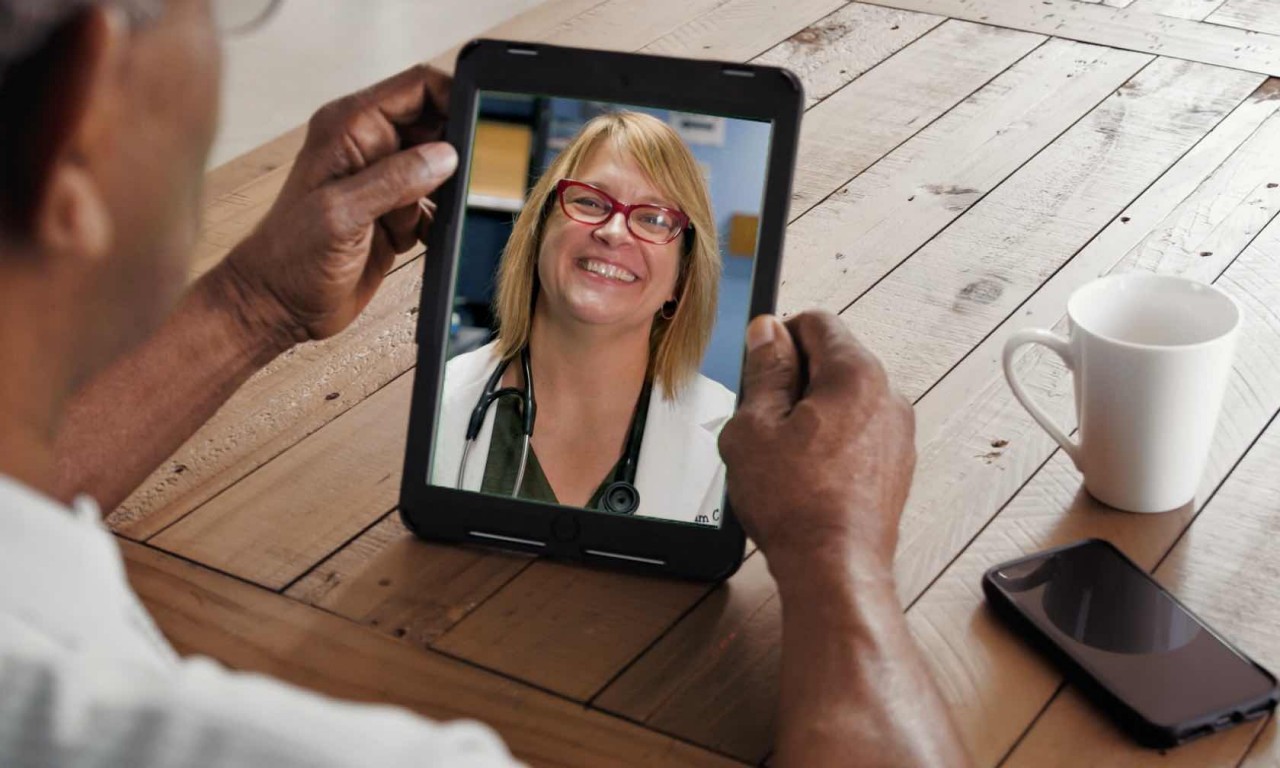7 things to do before, during and after your virtual visit
By Hope Winsborough

Telemedicine appointments are here to stay. Here’s help making sure yours runs smoothly.
The practice of telemedicine has skyrocketed, growing by more than 1,000% in March 2020 and 4,000% in April 2020, according to a JAMA Network Open study. During those same months, people around the world took to the internet, and searches for “telemedicine” and “telehealth” topics went up a whopping 546%, the journal Cureus reports.
The ability to receive high-quality health care without leaving home has been a game changer for older adults, says Mariana B. Dangiolo, M.D., a family physician and associate professor of family medicine and geriatrics at the University of Central Florida College of Medicine.
“Most of my patients find these visits very similar to what they’re used to from in-person appointments,” says Dr. Dangiolo.
You can expect the same level of care from a telemedicine appointment as you would from an in-office visit, with plenty of pluses: no traffic troubles, no parking problems and no waiting-room delays. The minuses? Your home may not be as private or as quiet as the provider’s office is, and technical issues could consume valuable time with your provider.
Here are 7 essential tips to help ensure a smooth virtual appointment:
1. Prepare as you would for an in-office visit
Before your appointment, gather any background material you might need, including a prioritized agenda for the appointment. Prepare a list of any symptoms you want to review and questions you want to ask. Also jot down any prescriptions that need to be refilled. If you’ll need a caregiver or trusted friend or translator to be present, make those arrangements ahead of time.
2. Set up your “exam room”
Plan to have your televisit in a well-lit room with few distractions, Dr. Dangiolo advises. The provider should be able to easily see your full body to waist level. And don’t forget silence — so turn off the TV or radio. Make sure your reading glasses and hearing aids are available if you use them.
3. Do a technology check
Take time to check your equipment well in advance of your appointment, if possible. Be sure you know how to use the audio and camera features on your computer, smartphone, tablet or laptop — so you can zoom in on a rash or other issue, if you have to.
“It’s also good to check on headphone quality if you’re using those,” says Dr. Dangiolo. If you’re not comfortable working with your device, ask a tech-savvy family member, friend or neighbor to help out. Also, if you have a choice of devices, go with the one that has the biggest screen.
When you call to schedule or confirm your appointment, ask if you’ll need to sign into a patient portal to have your appointment, or if you need to download any special app or program, says Dr. Dangiolo.
“A lot of different platforms are being used,” she says. “Everything from popular commercial video conferencing platforms to special software, applications or portals that are specific to your provider. Be sure to contact the office beforehand for any tips they can provide.”
4. Know your symptoms
If the appointment is related to urgent symptoms — for example, you’re feeling feverish or experiencing signs of the flu — take your temperature a few minutes beforehand. And be prepared to tell the provider how long it’s been since you last ate or had a drink of water.
If you have devices at home like a blood pressure cuff or a pulse oximeter, go ahead and take those readings ahead of your appointment so you can share the results with the provider. If you don’t, no worries — owning these items isn’t necessary for a virtual visit, says Dr. Dangiolo.
5. Be on time
No matter how your virtual visit begins — whether you make the call, wait for a call, or use the provider’s dedicated portal setup — being on time is just as important as in an in-office setting.
6. Make note of post-visit tasks
If your provider orders tests, requests medical records, schedules an in-office visit, or refers you to another health care provider, be sure to record the details and contact information so you can follow up.
7. Enjoy the interaction
In many cases, a virtual visit can be more personal than an office exam, Dr. Dangiolo says. After all, you’re in your home where you feel comfortable. This new setting often lends itself to a much more relaxed appointment.
“We teach medical students that with televisits, doctors should try to use basic Zoom etiquette. They should try to communicate effectively and not speak over someone, get distracted, or use too many gestures,” says Dr. Dangiolo. “But we also teach students to not be surprised if things go off script.”

